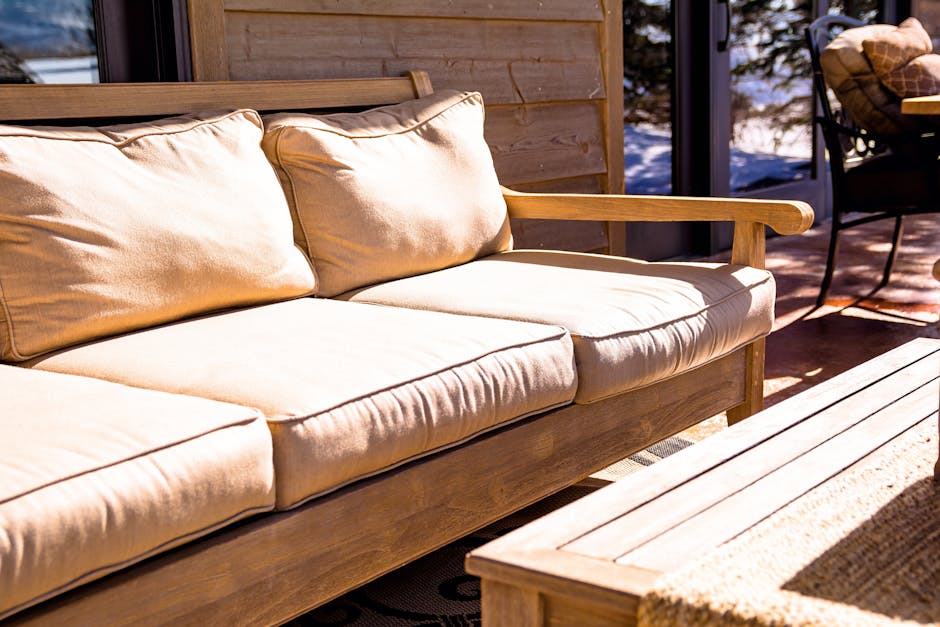How to Use Modular Furniture to Make Flexible Outdoor Living Spaces
Introduction
Outdoor living spaces are increasingly becoming extensions of our homes, places where we relax, entertain, and connect with nature. But traditional outdoor furniture can be bulky, inflexible, and often ill-suited to evolving needs. Enter modular furniture – a game-changer for creating dynamic and adaptable outdoor areas. This article explores how to use modular furniture to design flexible outdoor living spaces that can easily transform to accommodate different activities and gatherings.
Designing Flexible Outdoor Spaces with Modular Furniture
Understanding Modular Furniture
Modular furniture consists of individual pieces that can be arranged and rearranged in various configurations. These pieces typically include:
- Sectionals: These can be broken down into individual seats or combined for larger seating arrangements.
- Ottomans: Versatile pieces that can serve as footrests, extra seating, or coffee tables.
- Coffee Tables: Often designed to be combined with other pieces or used as standalone surfaces.
- Chairs and Loungers: Individual seating options that can be easily moved around.
- Storage Units: Helping to keep your outdoor space organized and clutter-free.
Benefits of Modular Outdoor Furniture
Choosing modular furniture offers numerous advantages:
- Adaptability: Easily rearrange the furniture to suit different occasions and group sizes.
- Space Optimization: Perfect for small patios, balconies, or large decks.
- Customization: Create a layout that perfectly matches your personal style and preferences.
- Easy Storage: Individual pieces can be stored more easily than bulky, fixed furniture sets.
- Longevity: Often made with durable materials that can withstand the elements.
Planning Your Modular Outdoor Space
Before purchasing any furniture, consider the following:
- Assess Your Space: Measure your patio, deck, or yard to determine the available area.
- Define Your Needs: How do you plan to use the space? Dining, lounging, entertaining?
- Consider Traffic Flow: Ensure there’s enough space for people to move around comfortably.
- Choose Durable Materials: Look for weather-resistant materials like aluminum, teak, or wicker.
- Think About Storage: Plan where you’ll store cushions and other accessories when not in use.
Creating Different Outdoor Zones
Modular furniture allows you to create distinct zones within your outdoor space:
Lounging Area
Arrange modular sectionals and ottomans to create a comfortable and relaxing seating area. Add cushions and throws for extra comfort.
Dining Area
Combine modular chairs and a table to create a dining space that can be easily expanded or contracted depending on the number of guests.
Entertainment Area
Use modular furniture to create a flexible entertainment space. Add a coffee table for drinks and snacks, and consider including a fire pit for ambiance.
Tips for Arranging Modular Furniture
- Anchor with a Rug: An outdoor rug helps to define the space and creates a cohesive look.
- Use Outdoor Lighting: String lights, lanterns, or spotlights can enhance the ambiance.
- Add Greenery: Plants and flowers can bring life and color to your outdoor space.
- Don’t Overcrowd: Leave enough space for comfortable movement and circulation.
- Experiment with Configurations: Try different arrangements until you find the one that works best for you.
Conclusion
Modular furniture is an excellent investment for anyone looking to create a flexible and adaptable outdoor living space. By carefully planning your layout, choosing durable materials, and considering your specific needs, you can transform your patio, deck, or yard into a welcoming and functional extension of your home. Embrace the versatility of modular furniture and create an outdoor space that’s perfect for relaxing, entertaining, and enjoying the beauty of the outdoors.














Post Comment